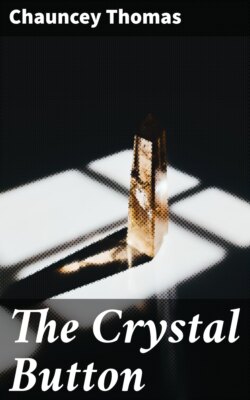Читать книгу The Crystal Button - Chauncey Thomas - Страница 5
На сайте Литреса книга снята с продажи.
EDITOR'S PREFACE.
ОглавлениеTable of Contents
OPEN LETTER TO THE PUBLISHERS.
Dear sirs:--For three months past, the undersigned has been engaged in the pleasant task of editing, for a Boston gentleman, the manuscript of a novel entitled "The Crystal Button, or Adventures of Paul Prognosis in the Forty-Ninth Century," which may perhaps commend itself as a fitting companion-piece to Mr. Edward Bellamy's "Looking Backward."
Of course, neither author nor editor has any idea that it will rival that remarkable production; but, in many ways, it helps to supplement with details the same general picture of future possibilities that Mr. Bellamy has so skillfully and attractively painted.
Permit me to state briefly that the present imaginative work, of which the accompanying table of contents will give some idea, was written many years ago by the well-known coach-builder of Boston. The thought was to foreshadow the future possibilities of mechanical and material development; and the work of authorship was entered upon as a means of diversion from the cares of business.
The original manuscript, now before me, shows that it was begun in 1872, and that the author wrote the closing page on February 9, 1878. The slight story, now cut in two and used as "Introduction" and "Conclusion," was written somewhat later, but bears no date.
About the year 1880, the author showed me this manuscript, and asked advice whether it was suitable for publication in book form. I read it with great interest, but reported that, in my humble opinion, it needed and well merited somewhat more finish, and also required to be sustained by some sort of narrative. It is to be feared that this report served to shelve it, for I heard nothing more about it until I read Mr. Bellamy's book in August of last year, when its remarkable similarity in general scheme to that of "The Crystal Button" led me to request an opportunity to re-read the latter. As a result of the correspondence that followed, the author expressed willingness to make it public, providing I would undertake the work of rearranging and editing it, which agreeable task is now approaching a finish.
I believe it to be a good book, in every way helpful and stimulating, decidedly practical in many of its suggestions, and covering a great variety of topics that seem to me to appeal to the interests of large classes of readers.
Its chief defect, if such it may be called, is the fact, already stated, that its general scheme so closely resembles that of Mr. Bellamy's book that it would be difficult to convince the public of its priority,--a task I should shrink from undertaking, although I know it to be a fact. It is unfortunate that its scene should likewise be laid in Boston; but there seems no sufficient justification for an editor's attempting to change the locality, especially in view of the danger of complicating numerous references that might easily be made inexplicable.
On the other hand, the author departs from Mr. Bellamy's track by dealing mainly with mechanical and material development, as the table of contents clearly shows; and just here he naturally possesses originality and strength, being one of the ablest mechanics and inventors that the American coach trade has thus far produced. It is only near the close, in the chapters entitled "Law," "Government," and "Money," that he enters Mr. Bellamy's field, and he does so by cross-paths. To the suggestion that the introduction of certain notes in passing might help to emphasize or supplement some of Mr. Bellamy's views, the author has not only prohibited this, but also requested the removal, so far as possible, of everything in his original manuscript that might suggest parallelism with any ideas presented in "Looking Backward," although, at the same time, he expresses general approval of the ideas therein advanced.
In the judgment of the editor, however, the all-important point of the present book is its theory of the simple but effective means by which the world finally attains the high level of the new civilization, which is described through the teachings of a reformer known as John Costor, whose text is ever "Truth! Truth!" It is Costor's emblem, the crystal button, that very fittingly gives the title to the book. Upon this foundation of truth, exerting its benign influence in wholly peaceful ways through the instrumentality of the individual, the family, social life, the arts, the government, and finally through the grand consolidation of all governments, he erects the pillars of his ideal state. Whatever Socialism and Nationalism may or may not accomplish, this lesson of truth-loving and truth-observing is certainly a kind of seed that can hardly fail to produce good fruit, whatever the soil on which it may chance to alight. In this, as you will observe, consists the moral force of the book.
Please pardon the length of this letter, but I feel desirous to do my duty, as far as I am able, in adequately introducing the work to your attention; and, with your permission, it will give me pleasure to submit the manuscript to you as soon as it is completed.
Very respectfully yours,
George Houghton.
Yonkers, New York, February 10, 1890.
